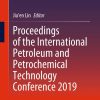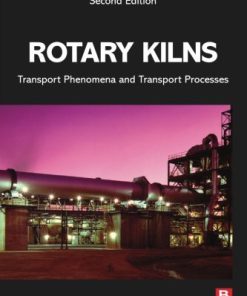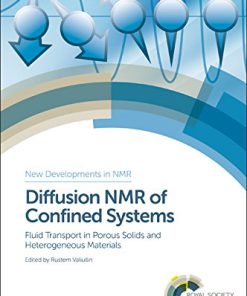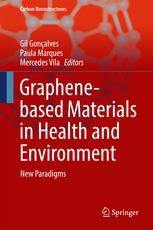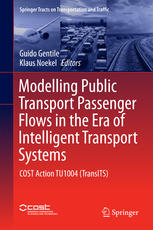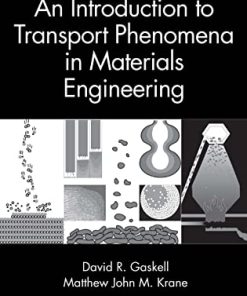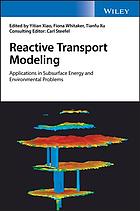Growth and Transport in Nanostructured Materials Reactive Transport in PVD CVD and ALD 1st Edition by Angel Yanguas Gil 3319246704 9783319246703
$50.00 Original price was: $50.00.$25.00Current price is: $25.00.
Growth and Transport in Nanostructured Materials Reactive Transport in PVD CVD and ALD 1st Edition by Angel Yanguas Gil – Ebook PDF Instant Download/Delivery: 3319246704, 9783319246703
Full download Growth and Transport in Nanostructured Materials Reactive Transport in PVD CVD and ALD 1st Edition after payment
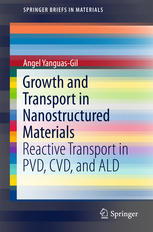
Product details:
ISBN 10: 3319246704
ISBN 13: 9783319246703
Author: Angel Yanguas Gil
This book will address the application of gas phase thin film methods, including techniques such as evaporation, sputtering, CVD, and ALD to the synthesis of materials on nanostructured and high aspect-ratio high surface area materials. We have chosen to introduce these topics and the different application fields from a chronological perspective: we start with the early concepts of step coverage and later conformality in semiconductor manufacturing, and how later on the range of application branched out to include others such as energy storage, catalysis, and more broadly nanomaterials synthesis. The book will describe the ballistic and continuum descriptions of gas transport on nanostructured materials and then will move on to incorporate the impact of precursor-surface interaction. We will finally conclude approaching the subjects of feature shape evolution and the connection between nano and reactor scales and will briefly present different advanced algorithms that can be used to effectively compute particle transport, in some cases borrowing from other disciplines such as radiative heat transfer. The book gathers in a single place information scattered over thirty years of scientific research, including the most recent results in the field of Atomic Layer Deposition. Besides a mathematical description of the fundamentals of thin film growth in nanostructured materials, it includes analytic expressions and plots that can be used to predict the growth using gas phase synthesis methods in a number of ideal approximations. The focus on the fundamental aspects over particular processes will broaden the appeal and the shelf lifetime of this book. The reader of this book will gain a thorough understanding on the coating of high surface area and nanostructured materials using gas phase thin film deposition methods, including the limitations of each technique. Those coming from the theoretical side will gain the knowledge required to model the growth process, while those readers more interested in the process development will gain the theoretical understanding will be useful for process optimization.
Table of contents:
1 Introduction
1.1 Introduction
1.2 Vapor Phase Thin Film Deposition Techniques
1.2.1 Conformality of Vapor Phase Deposition Techniques
1.2.2 Sticking Probability
1.2.3 Knudsen Number
1.3 Substrates and Scaffolds
1.3.1 Deterministic Substrates
1.3.2 Porous and Disordered Substrates
1.4 Historical Overview
1.4.1 Conformality in Semiconductor Manufacturing
1.4.2 Chemical Vapor Infiltration
1.4.3 Chemical Engineering and Heterogeneous Catalysis
1.5 Summary
References
2 Physical and Chemical Vapor Deposition Techniques
2.1 Physical Vapor Deposition Methods: Evaporation and Sputtering
2.1.1 Evaporation
2.1.2 Sputtering
2.1.3 Approaches to Improve Step Coverage in PVD Methods
2.2 Chemical Vapor Deposition
2.2.1 Impact of Kinetics on the Conformality of CVD Processes
2.2.2 Strategies to Improve Conformality in CVD
2.3 Atomic Layer Deposition
2.3.1 Introduction
2.3.2 Models of ALD Surface Kinetics
2.3.3 Application of ALD to High Surface Area Materials
2.4 Summary
References
3 Fundamentals of Gas Phase Transport in Nanostructured Materials
3.1 Ballistic Models
3.1.1 Fundamental Equations
3.1.2 Source Gas Distribution
3.1.3 Particle Reemission Model
3.1.4 View Factors
3.2 Single Particle Approaches to Ballistic Transport
3.2.1 Kinetic Monte Carlo Simulations
3.2.2 Markov Chain Formulation
3.3 Continuum Description: Diffusion-Based Models
3.3.1 Knudsen Diffusion Coefficient
3.3.2 Transitional Flow
3.3.3 Diffusion in Micropores
3.3.4 Diffusion in Polymers
3.3.5 Transport in Presence of Reversible Adsorption/Desorption
3.4 Summary
References
4 Thin Film Growth in Nanostructured Materials
4.1 PVD and Early Line of Sight Approximations
4.1.1 Directed Flow
4.1.2 Isotropic Case
4.2 Constant Sticking Probability
4.2.1 Diffusion-Based Model
4.2.2 Impact of Reaction Probability on Film Conformality
4.3 Pressure-Dependent Kinetics
4.3.1 Conformal Zone for Single-Source Precursors
4.3.2 Superconformal Processes and Conformality Enhancement
4.4 Self-limited Surface Kinetics: Atomic Layer Deposition
4.4.1 Infiltration Kinetics
4.4.2 Non-ideal ALD Processes
4.5 Summary
References
5 Advanced Concepts
5.1 Predicting Shape Evolution
5.1.1 Lagrangian Methods
5.1.2 Eulerian Methods
5.1.3 String Methods
5.1.4 Method of Characteristics
5.1.5 Cell or Volume of Fluid Methods
5.1.6 Level Set Methods
5.1.7 Pore Constriction Models
5.2 Bridging Feature and Reactor Scales
5.2.1 Effective Reactivity Approach
5.2.2 Mesoscale Model Approach
5.2.3 Effective Reaction Probability of High Surface Area Materials
5.3 Summary
People also search:
nano-to-micro transport processes
nanostructured high-entropy materials
nanoparticles growth factor
nanomaterials growth control
transport materials
You may also like…
Cookbooks
Engineering
Graphene based Materials in Health and Environment New Paradigms 1st Edition Gil Gonçalves
Engineering - Civil & Structural Engineering
Public Transport Planning and Management in Developing Countries 1st Edition Ashish Verma
Engineering - Civil & Structural Engineering
Engineering - Industrial Engineering & Materials Science
An Introduction to Transport Phenomena in Materials Engineering 3rd Edition Gaskell


